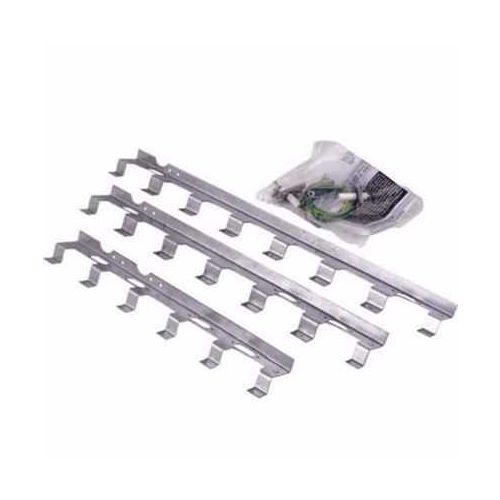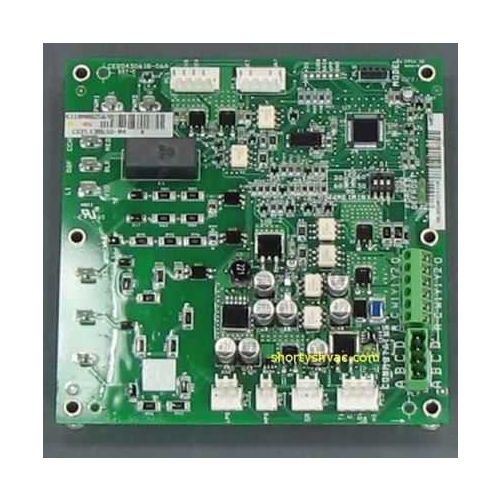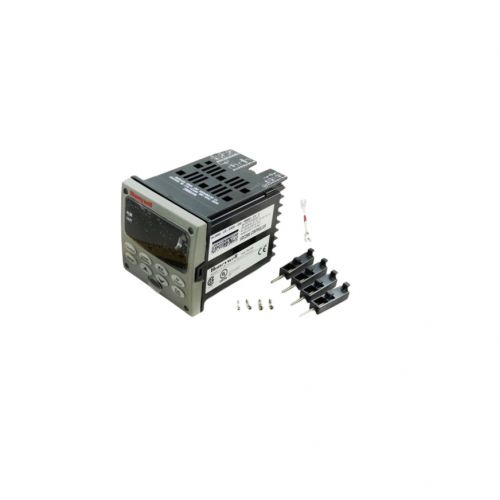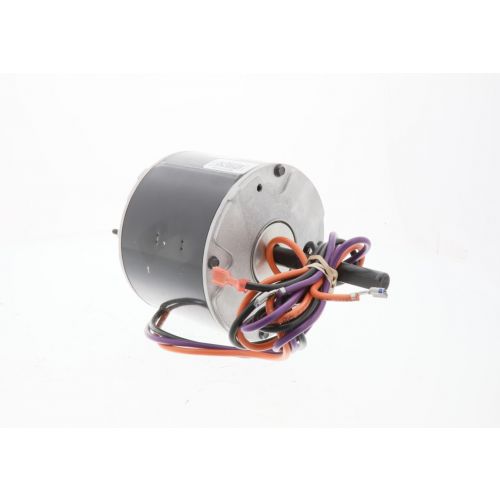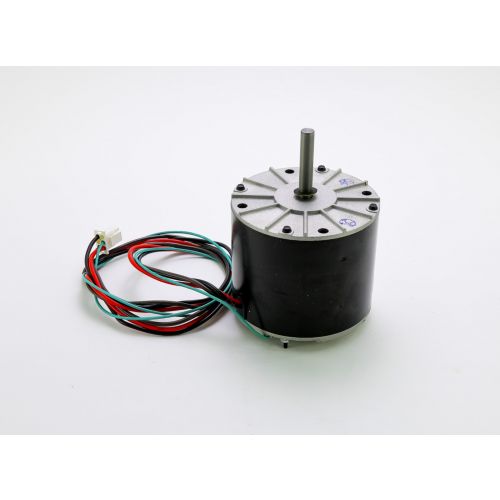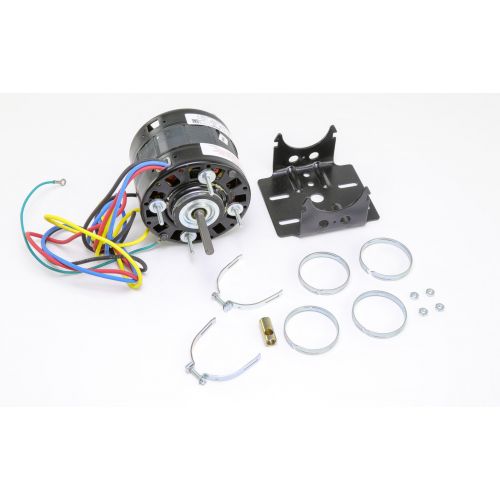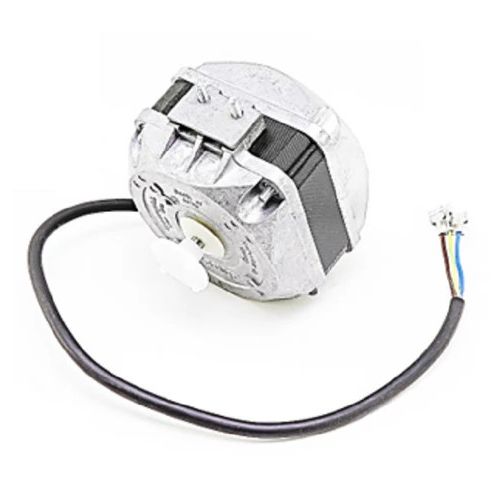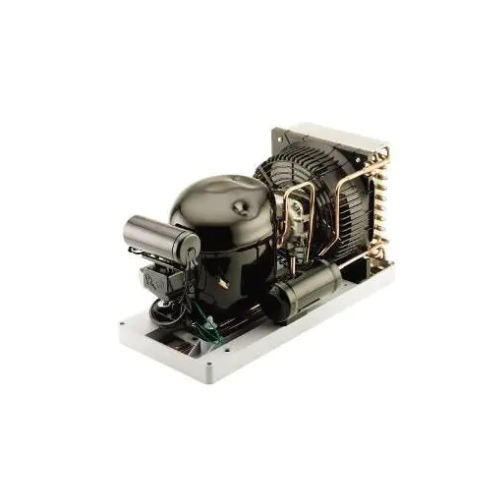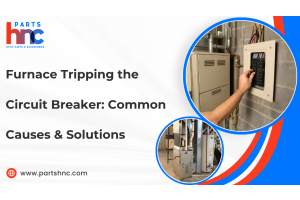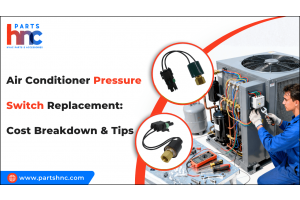AC Condenser Fan Motor Troubleshooting: Here's How to Fix
If your air conditioner isn’t cooling properly, the issue may lie with the AC condenser fan motor. A malfunctioning fan motor can cause poor airflow, strange noises, or even prevent your unit from turning on. Fortunately, troubleshooting and fixing this issue can be straightforward if you know where to look. In this guide, we’ll walk you through the common signs of a failing condenser fan motor and provide step-by-step instructions on how to diagnose and repair it. Whether the problem is a faulty capacitor, broken fan blades, or a motor that’s no longer working, you’ll learn how to get your system back to optimal performance without the need for costly repairs. Let’s dive into fixing your AC’s condenser fan motor.
Understanding the Role of an AC Condenser Fan Motor
The AC condenser fan motor functions as an essential component for cooling your air conditioner system. The outdoor unit contains this component which activates the fan responsible for heat removal from the refrigerant to maintain efficient cooling operation. The cooling process in your home requires the AC to transfer indoor air heat to the condenser coil which then needs to be cooled before releasing the heat outside. The condenser fan motor drives the fan which draws air across the condenser coil to transfer heat outside. The heat transfer process becomes less efficient when the motor fails to work properly which results in poor cooling performance.
The system faces two problems when a condenser fan motor fails: it overheats and either shuts down completely or fails to function as a cooling mechanism. The motor maintains proper refrigerant temperature which protects the coils from damage and freezing. Your air conditioning system depends on the AC unit condenser fan motor to function efficiently and effectively. Identifying how the condenser fan motor operates lets you quickly spot and resolve problems therefore maintaining peak system performance.
Looking for reliable AC condenser fan motor parts? At PartsHnC, we offer high-quality OEM parts for top brands like Carrier, Trane, Rheem, Goodman, and essential components like capacitors, fan blades, and motors. Shop with us for durable, cost-effective solutions to get your AC running smoothly. Browse our wide selection and enjoy fast shipping today!
Common Symptoms of a Faulty Condenser Fan Motor
A malfunctioning condenser fan motor causes multiple performance issues with your air conditioning system that ultimately result in cooling system failure. Early detection of these symptoms helps stop additional equipment deterioration which also minimizes repair costs. These are the primary indicators that your condenser fan motor is failing:
-
Reduced Cooling Performance: Your air conditioner loses its cooling power when the condenser fan motor fails to work correctly. The condenser coils need air circulation from the motor to release heat effectively. A nonfunctioning condenser fan motor prevents the system from effectively cooling air.
-
Strange Noises: The outdoor unit produces abnormal noises including grinding and buzzing and rattling sounds that indicate condenser unit issues.. The noises stem from worn-out bearings combined with debris in the fan and damaged motor components.
-
AC Shuts Off or Short Cycles: Your air conditioner will shut down or cycle through brief cooling periods when the condenser fan motor overheats or stops working properly. The system will automatically shut down to prevent damage to itself.
-
Burning Smell: A burning odor from the outdoor unit signals that the motor has overheated seriously. The motor failure combined with electrical problems and component friction leads to this issue.
-
Visible Damage or Wear: The inspection of the fan motor might show clear indications of damage including broken fan blades and rust or general wear. The improper rotation of the fan due to this issue will damage both the motor and other system components.
You should take immediate action when you observe these symptoms. Taking care of detected problems at first sight helps stop additional system damage while keeping your AC system operational.
Also check out this helpful article: Common Air Conditioner Compressor Issues and Fixes for a deeper understanding of air conditioner compressor problems and potential fixes.
Primary Causes of AC Condenser Fan Motor Failure
Multiple elements lead to the breakdown of your AC condenser fan motor. Learning about these causes enables you to stop motor problems and make your air conditioning system last longer. The following factors serve as the main causes of condenser fan motor breakdown:
-
Overheating: Motor failure occurs most frequently because of overheating conditions. The internal components of the motor will overheat when it operates for long durations or when exposed to high temperatures which results in failure. The motor overheats because poor airflow combined with clogged filters and inadequate maintenance blocks necessary air circulation around the motor.
-
Electrical Failures: The motor will malfunction because of faulty wiring combined with electrical shorts and damaged capacitors. The proper functioning of capacitors remains vital for motor start-up and operation because their failure either blocks motor operation or leads to motor burnout eventually.
-
Worn Bearings: The fan motor needs functional bearings to function smoothly during rotation. The continuous operation causes bearings to gradually deteriorate. The deterioration of bearings creates motor friction which puts stress on the system until the motor fails unless maintenance is performed.
-
Debris and Dirt Buildup: The accumulation of dust and dirt and debris on fan blades and inside motors forces the motor to work against greater resistance. The accumulation of debris creates problems for fan rotation which results in overheating conditions that eventually damage the motor.
-
Age and Wear: The condenser fan motor functions like other mechanical parts because normal usage eventually leads to its deterioration. The passing years go along with decreased motor efficiency which intensifies the chance for breakdowns.
Proper maintenance through regular cleaning of the unit together with wire inspections and component replacement helps extend the lifespan of your condenser fan motor.
How to Troubleshoot AC Condenser Fan Motor Issues
HVAC troubleshooting enables you to save time and money by determining AC condenser fan motor problems before they turn into expensive repairs. The following user guide explains how to solve typical issues:
Check the Power Supply
The AC unit fails to activate because either the breaker has tripped or the fuse has blown which results in power interruption.
Solution: Check the circuit breaker for tripped status then reset it if needed. First check the power connection of the unit while inspecting the fuse for visible damage. To restore power you must replace the blown fuse.
Inspect the Fan Blades
The cooling efficiency of the fan decreases when fan blades become damaged or obstructed.
Solution: Examine the fan blades for any signs of damage or debris. Remove all objects which prevent the fan from rotating freely. Replace damaged blades immediately because they block essential airflow through the unit.
Test the Capacitor
The motor will not start up or will produce a humming sound when a defective capacitor exists.
Solution: A multimeter should be used to measure the capacitor voltage. Replace the capacitor if its voltage measurement does not meet the required specifications. A new capacitor operating correctly will enable the motor to start properly and operate smoothly.
Examine the Motor for Overheating
Motor failure results from overheating which happens when coils become dirty or ventilation is inadequate or when airflow is obstructed.
Solution: The cleaning process should focus on completely clearing condenser coils from all dirt and debris which could restrict airflow. The unit needs sufficient ventilation space throughout its area. Check the area for any objects that could block air movement through the system.
Check the Motor’s Bearings
Motor movement becomes restricted while grinding noises and rattling sounds occur when bearings become worn or damaged.
Solution: The inspection of motor bearings should check for evidence of wear or damage. Apply lubrication to dry bearings while replacing damaged bearings with new ones. The motor needs replacement when bearing repairs become impossible.
Listen for Unusual Noises
The fan motor together with its bearings and blades will produce grinding, buzzing or rattling noises when they experience damage.
Solution: The first step to resolve the noise problem involves determining its origin between fan blades and bearings or motor components. The affected components need replacement or lubrication to remove the noise and achieve normal AC unit operation.
When to Repair vs. When to Replace the Fan Motor
The decision to fix or replace the condenser fan motor depends on how badly it is damaged and its current state of condition. The following steps will help you decide between repair and replacement of the condenser fan motor:
|
Factor |
When to Repair the Fan Motor |
When to Replace the Fan Motor |
|
Condition of the Motor |
New or minimal damage |
Severe damage (e.g., burnt windings, electrical failures) |
|
Types of Issues |
Faulty capacitors, dirty fan blades, worn bearings |
Overheating, multiple system breakdowns |
|
Repair Options |
Cleaning fan blades, replacing capacitors, lubricating bearings |
No viable repair option due to severe damage |
|
Cost Consideration |
More economical, quick, and affordable solution when damage is minor |
Replacing may be more cost-effective when repair costs approach or exceed the price of a new motor |
|
Motor Age and Repair History |
Suitable for motors that have not undergone frequent repairs or are relatively new |
Replace if the motor is old or has undergone multiple repairs, as it will likely continue causing issues |
|
Operational Lifespan |
Repair can extend motor functionality and lifespan through maintenance and minor fixes |
A replacement offers long-term reliability and efficiency, especially when the motor has exceeded its useful lifespan |
Preventive Maintenance Tips for AC Condenser Fan Motors
Preventive maintenance needs to be regularly performed on your AC condenser fan motor to preserve its operational life and performance quality. Your system will operate optimally and avoid major maintenance costs through routine checks together with standard maintenance procedures. These steps will help you maintain your condenser fan motor effectively:
-
Regular cleaning of coils and fan blades: The buildup of dirt along with debris on both condenser coils and fan blades blocks airflow which causes harmful heat to develop inside the motor. You should clean the coils and blades annually to guarantee proper airflow through the system. To clean the condenser coils and fan blades you should use a soft brush or vacuum followed by coil cleaner for a thorough cleaning.
-
Lubricate the Motor Bearings: Motor bearings gradually lose moisture which causes them to age and creates friction that results in overheating. Regular application of lubrication to bearings will decrease wear and maintain smooth motor operation. Refer to the product manual from the manufacturer to find the correct lubricant specifications.
-
Check the Capacitor: The capacitor functions to initiate motor operation and maintain its continuous operation. The motor will either fail to start or operate inefficiently when the capacitor breaks down. You should inspect the capacitor once per year to replace it when you detect signs of damage including bulging or leakage.
-
Inspect Electrical Connections: Electrical problems resulting from loose or corroded wiring will eventually lead to motor failure. Multiple inspections of motor electrical connections should be performed to check for secure attachment and absence of corrosion. Check for loose connections then fix them before replacing any damaged wires.
-
Ensure Proper Airflow: The condenser requires sufficient ventilation to stop the motor from overheating. The condenser unit requires an unobstructed area free from debris and leaves and other objects. The fan path and all vents must remain unobstructed.
Check out this blog on How to Clean Air Conditioner Coils for more guidance on preventive maintenance of dirty coils that reduce the performance.
Safety Precautions When Working on AC Condenser Units
Safety becomes essential when working on AC condenser units because you will handle electrical components and potentially dangerous materials. These safety measures should be followed during maintenance or repair work on your AC condenser unit:
-
Turn Off Power: Before beginning work on the unit always disconnect power from the system. The breaker panel power supply needs to be disconnected to prevent electric shock.
-
Wear Protective Gear: Protect your hands and eyes with safety gloves and goggles and use insulated tools to shield yourself from electrical dangers and debris and sharp unit components.
-
Check for Leaks: A thorough inspection should be performed to verify that the condenser unit has no refrigerant leaks before opening it. Contact a professional immediately when you detect signs of refrigerant leakage since these substances can be dangerous to your health.
-
Be Cautious with Tools: Select tools that match the specific requirements of your work activities particularly when you need to handle electrical components. Make sure to verify that all tools maintain proper insulation while being in good working condition.
-
Keep the Area Dry: Working with electrical systems requires complete avoidance of water and moisture exposure. Water exposure leads to electrical short circuits which in turn raises the danger of experiencing electric shock.
-
Use a Voltage Tester: A voltage tester should be used first to verify power is off before handling electrical components. The voltage tester allows you to verify that no active wires or components exist.
-
Avoid Working in Extreme Conditions: Working on the AC condenser unit should be avoided when weather conditions reach extreme temperatures. Working during hot weather or rainy conditions creates additional hazards for safety.
The combination of these safety measures helps you minimize risks during AC condenser unit repair and maintenance operations. Contact an expert technician if you have concerns about your safety because making yourself safe is always essential.
Read on & find out how to test and replace your air conditioning filter for simple maintenance steps to identify If your AC is experiencing airflow issues.
Final Thoughts: Ensuring Optimal AC Performance
The condenser fan motor together with other essential components needs regular care to ensure optimal AC performance. Efficiency and operational lifespan of your system will increase through basic maintenance procedures consisting of coil cleaning while checking fan blades and electrical wires and motor lubrication. Regular maintenance of these tasks protects your AC system from typical problems which allows it to operate efficiently during hot days.
Monitoring your air conditioner for unusual sounds and inadequate cooling and AC fan not working will help prevent costly maintenance expenses. You must handle small system problems right away to maintain peak performance. When in doubt about self-refurbishing your system you should seek expert advice from a professional technician. A well-maintained air conditioner that receives immediate issue resolutions will operate at maximum efficiency to deliver comfort and cooling throughout all seasons.
FAQs
How much does an AC condenser fan motor cost?
The AC condenser fan motor cost is dependent on the model and brand, often costing between $100 and $500. Prices will differ according to the complexity of the motor and whether you are buying OEM or aftermarket components.
When do I need an AC condenser fan motor replacement?
You might require AC condenser fan motor replacement if the motor is excessively hot, producing strange sounds, or failing to turn on. If repairs are too expensive or the motor is badly damaged, replacement is usually the best option.
How to know if an AC condenser fan motor is bad?
Signs of a faulty AC condenser fan motor are abnormal sounds, diminished cooling capacity, and the failure of the fan to run. If the motor overheats or the unit cuts off repeatedly, it's time to replace the motor.
How do you reset a condenser fan?
In order to reset a condenser fan, initially turn off the AC unit's power at the circuit breaker. Let it sit for a few minutes and then turn the breaker back on. If the motor won't start, additional troubleshooting or replacement might be in order.



